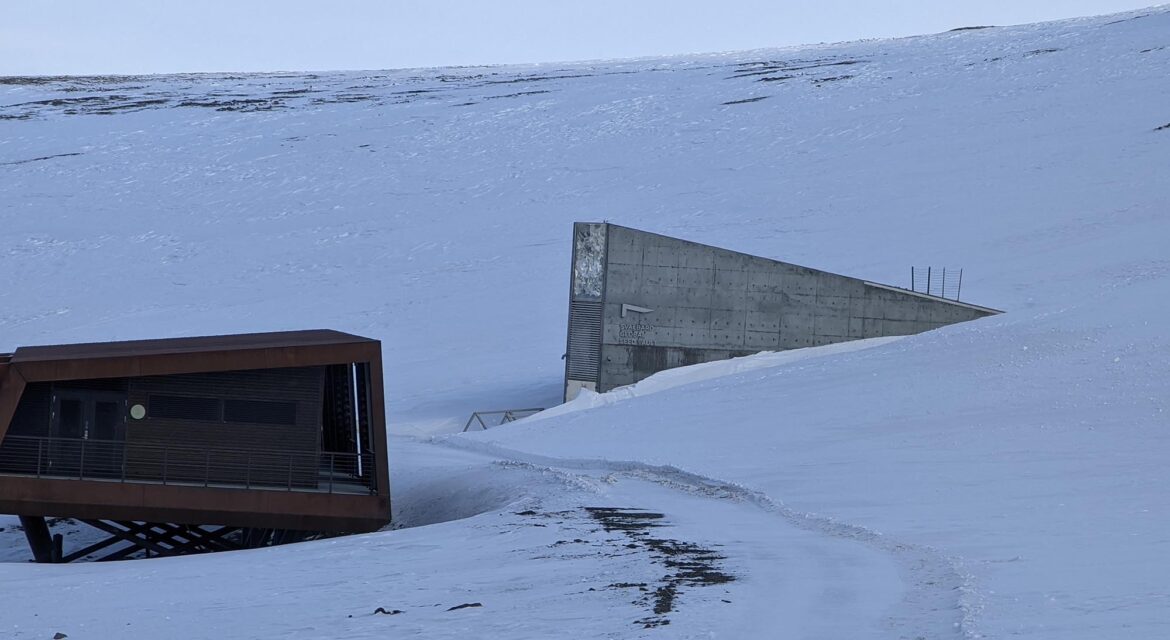 Carved into a hillside above Longyearbyen, the Svalbard Seed Vault was created to provide long-term storage of seeds that come from countries and regions across the world. Its purpose is to backup genebank collections to secure the foundation of our future food supply, highlighting why the Svalbard Seed Vault has been mentioned as one of the most significant landmarks in the world and why institutions across the region highlight it. All of this underscores the potential it has to become the most important landmark in Svalbard.
Carved into a hillside above Longyearbyen, the Svalbard Seed Vault was created to provide long-term storage of seeds that come from countries and regions across the world. Its purpose is to backup genebank collections to secure the foundation of our future food supply, highlighting why the Svalbard Seed Vault has been mentioned as one of the most significant landmarks in the world and why institutions across the region highlight it. All of this underscores the potential it has to become the most important landmark in Svalbard.
In 2001, an international peace treaty to enable collaboration with plant genetic resources for food and agriculture was established. That began an effort to find an appropriate location for long-term seed storage. After exploring options across the world and determining Svalbard as an ideal location, the Norwegian Government committed to fund the Seed Vault and begin the construction in 2004. In 2008, the Seed Vault opened as a partnership between the Ministry of Agriculture and Food of the Government of Norway, the Nordic Genetic Resource Center (NordGen), and the Crop Trust

 The Svalbard Seed Vault allows organizations and countries to send seeds and other genetic plant material that are stored under “black-box conditions,” meaning the depositors are the only ones who can withdraw their own seeds. Any organization or country can send seeds to the Svalbard Seed Vault, further cultivating a sense of community and permanence around it that attracts attention from across the world. It has the capacity to store 4.5 million varieties of crops and it holds the most diverse collection of food crop seeds in the world. It offers long-term protection for one of the most important natural resources on Earth.
The Svalbard Seed Vault allows organizations and countries to send seeds and other genetic plant material that are stored under “black-box conditions,” meaning the depositors are the only ones who can withdraw their own seeds. Any organization or country can send seeds to the Svalbard Seed Vault, further cultivating a sense of community and permanence around it that attracts attention from across the world. It has the capacity to store 4.5 million varieties of crops and it holds the most diverse collection of food crop seeds in the world. It offers long-term protection for one of the most important natural resources on Earth.
While access to the Svalbard Seed Vault itself needs to be tightly controlled, the site has the potential to welcome visitors that want to learn more about the site and effort to safeguard as much of the world’s unique crop genetic material as possible. Books that contain these insights are available at various locations in Longyearbyen but signs and placement on maps are the current limitations of this exposure and engagement.
Ranked as one of the most influential projects of the past 50 years and referred to by some as the “doomsday” vault on account of how the material in the vault could be utilized to restore certain crops and plant species from threats or destruction, the Svalbard Seed Vault could be utilized in a much bigger way to supports the further growth of tourism as one of the top industries on Svalbard. Doing so would enable growth that benefits stakeholders and the surrounding community on multiple levels.

